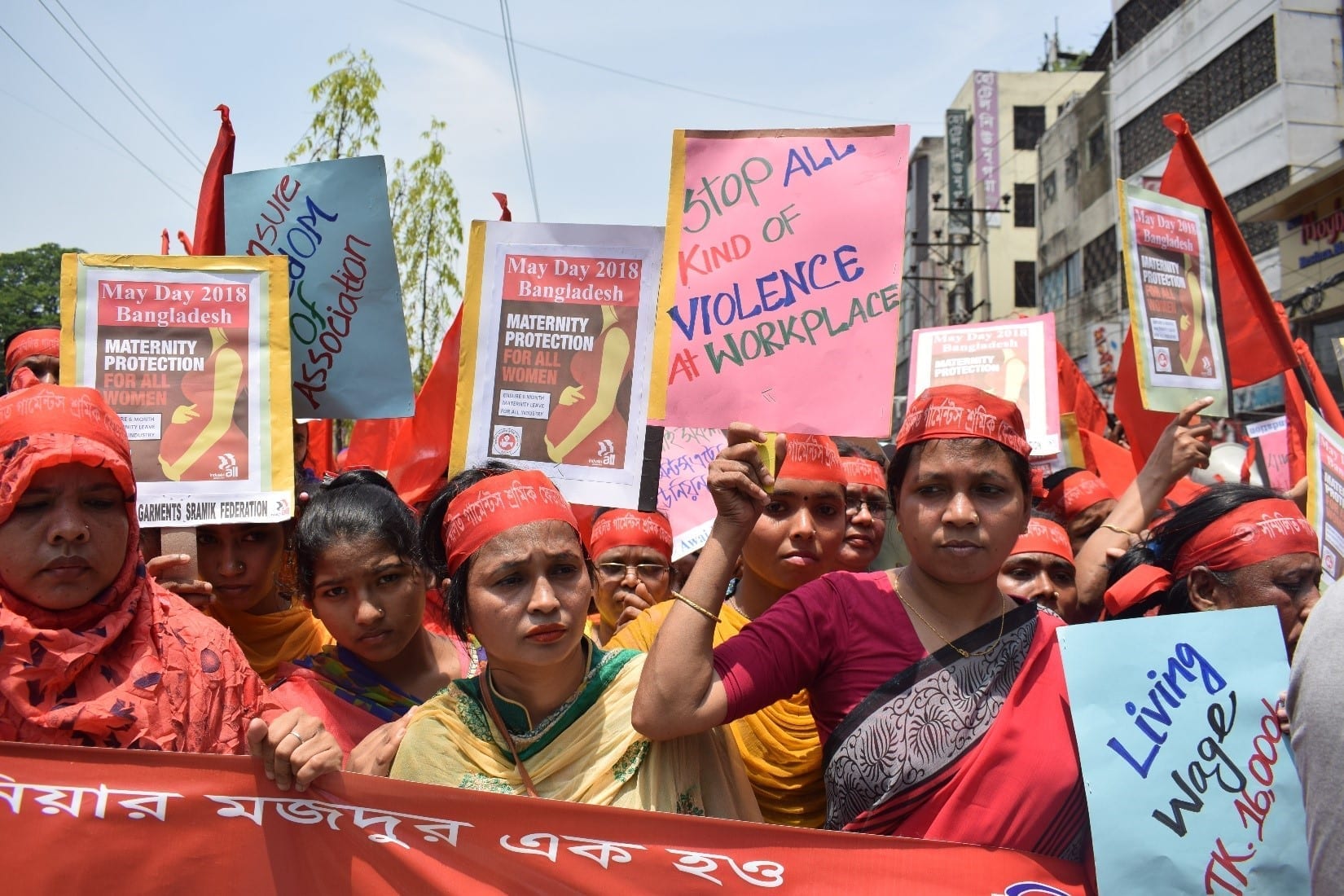
Feb 10, 2020
In Bangladesh, garment workers often seek to form unions and worker associations to better protect against wage theft, unfair treatment and lack of health and safety protections, including large-scale safety threats like building collapses. Yet they increasingly are being denied the ability to do so because of an intensifying anti-worker environment in which their efforts to form unions are suppressed. Even when they succeed in forming unions, their attempts to register them with the government often are denied, according to data compiled by the Solidarity Center.

Golam Azam, a BGIWF organizer, says garment workers encounter government resistance when registering unions. Credit: Solidarity Center/Istiak Inam
Of the 1,031 union registration applications tracked between 2010 to 2018, the government rejected 46 percent—even though registration is meant to be a simple administrative process. Union leaders say the Registrar of Trade Unions (RTU) imposes burdensome conditions and rejects applications for reasons like lack of a union members’ ID or other employer-provided documents (which is not required by law), or because the factory ID number does not match with factory records (even though it is up to management to provide correct ID numbers).
Meanwhile, unions are rarely provided an opportunity to rebut the RTU determination.
Golam Azam, an organizer with the Bangladesh Garment and Industrial Workers’ Federation (BGIWF), has firsthand experience with such rejections.
“We have submitted trade union registration forms for Moon Radiance Ltd., with 2,000 workers in that factory, three times since 2018 and have been rejected each time,” he says. “For FGS Denimware Ltd., we have submitted the forms twice but got rejected. We were going to submit it the third time, but management made their own union right before we submitted the form.”
Unions, Workers Targeted for Standing Up for Their Rights
Bangladesh’s ready-made garment (RMG) sector employs nearly 4 million workers and increased its annual revenue from $19 billion to $34 billion between 2012 and 2019—a 79 percent rise. Yet, workers continue to earn the lowest wages in the region, even after a wage increase at the end of 2018 made the legal monthly minimum wage $95—roughly half of the wage needed to make ends meet in Dhaka, the capital, where the cost of living is equivalent to that of Montreal.
 Outraged that the new minimum wage did not reflect the amount needed to get by, garment workers protested in December 2018 and January 2019. More than 11,000 union leaders and garment workers were fired following the demonstrations, and blacklists bearing workers’ names and faces hung outside factory gates. Dozens of workers were arrested, and some remained in jail on trumped-up charges for more than a month.
Outraged that the new minimum wage did not reflect the amount needed to get by, garment workers protested in December 2018 and January 2019. More than 11,000 union leaders and garment workers were fired following the demonstrations, and blacklists bearing workers’ names and faces hung outside factory gates. Dozens of workers were arrested, and some remained in jail on trumped-up charges for more than a month.
Following the crackdown on workers, fewer garment workers sought to form or register unions. Unions filed only eight registration applications from December 2018 to January 2019 compared with 33 from December 2017 to January 2018, according to Solidarity Center data.
Union supporters experience constant employer harassment and intimidation, including dismissals for union activism, as well as verbal and physical abuse by management.
“Management puts extra workload on the union leaders and in many cases terminates the workers who they think might protest in future,” says Azam. “For instance, in Al Gawsia factory in Ashulia, false cases have been filed against union leaders and members so that they can be terminated and will not get their due benefits. Workers are subject to false cases even when they do nothing against the law, but when the management violates the law, they are not subject to any repercussion.”
‘A Union Has Empowered Me to Demand My Rights’
Following the deaths of more than 1,200 garment workers in the 2012 fire at the Tazreen Fashions factory and the 2013 Rana Plaza building collapse, workers vigorously organized to form unions and negotiate contracts, as the Bangladesh government and RMG employers responded to international pressure to improve safety and wages.
Yet for many workers at the country’s 5,000 garment factories, fire safety and other hazards are still a danger, and employers often arbitrarily fire workers, deny them maternity leave or other legal benefits, and sexually harass women workers or engage in other forms of gender-based violence—making the ability of workers to form unions and worker associations essential.
Mosammat Shorifunnesa, a garment worker and factory union leader, describes how the union made a difference for his co-workers.
“In one instance, five of my workmates were ordered to stay after work and were then fired the same day without prior notice or any payments,” she says. After multiple meetings with management, the factory compensated each worker between $766 and $1,120, as required by Bangladesh Labor Act.
“The trade union is not just an organization, it is a bond between the deprived and the voiceless that enables us to have collective power,” says Shorifunnesa. “It has empowered me to demand my rights and has united my workmates. It gives me the strength to stand by them, and them the courage to stand by me.”

Apr 23, 2019
Six years ago, the preventable Rana Plaza collapse in Bangladesh killed 1,134 garment workers in the world’s worst garment industry disaster. Corporate greed, inadequate labor and building code enforcement, and worker exploitation all contributed to the April 24, 2013, tragedy, which spurred efforts to improve factory safety and support workers seeking a voice on the job.

Nurunnahar mourns the loss of her daughter who died in the Rana Plaza collapse. Credit: Solidarity Center/Balmi Chisim
Many survivors still face unemployment and poverty because they are too injured to work, according to an Action Aid survey. Months before Rana Plaza collapsed, a fire at Tazreen Fashions factory killed more than 112 workers, part of a pattern of dangerous conditions and deadly risks garments workers face each day in Bangladesh.
Following Rana Plaza, Bangladesh has seen important international and domestic efforts to address fire and building structure risks and improve the labor conditions that hinder workers from reporting dangerous working conditions and violations, and exercising their labor rights. Initiatives like the Bangladesh Accord for Fire and Building Safety, a binding agreement involving fashion brands, unions and the government that helped make many garment factories safer, fueled a rise in union organizing.
And through worker education, like the Solidarity Center’s Fire and Building Safety program, garment workers are boosting their capacity to identify safety and health problems at the workplace and learn about their right to join together to ensure safe workplaces by taking collective action to resolve problems.
6,000 Garment Workers in Solidarity Center Fire Safety Trainings
More than 6,000 Bangladesh garment workers have participated in Solidarity Center safety programs in recent years, including Shilpi Akter, who has worked in the garment industry for more than 10 years.

Some 6,000 Bangladesh garment workers have taken part in Solidarity Center fire safety trainings. Credit: Solidarity Center/Balmi Chisim
“Before the Rana Plaza incident, there were no sprinklers, fire doors or emergency lights in our factory,” she says. “I had no idea what fire or health and safety at work meant, neither did we have any trade unions or safety committees.
“Through Solidarity Center’s fire safety training, I learned how to use a fire extinguisher, how to be safe from the fumes during a fire accident, and that I must not keep the clothes I stitch near the heated motor of the machine. This knowledge was unknown to me even a few years back.”
Bilkis Begum, a garment worker and a union president, says before Rana Plaza, “we handled the toxic chemicals without any precaution and had no idea on what to do in case of a fire accident except to run.”
Mohammed Ronju paints the incident more starkly. “There would be no Rana Plaza if it had a union,”’ says Ronju, who has worked in the garment industry for 15 years. If workers had a union, they “would not go inside the building when they sensed trouble. They would have strongly resisted the pressure from management to go inside a building about to collapse.” The day before the Rana Plaza disaster, building engineers declared the structure unsafe. Yet managers threatened to withhold wages if workers did not show up for work the day Rana Plaza collapsed.
‘No More Rana Plazas’
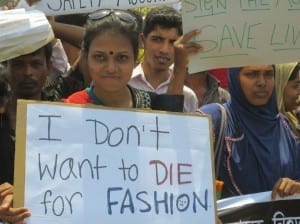
Each year, tens of thousands of Bangladesh workers rally on the anniversary of the Rana Plaza disaster to demand safe working conditions. Photo: Solidarity Center/Sifat Sharmin Amita
The Rana Plaza tragedy prompted international efforts, through the Accord and other mechanisms, to ensure dangerous garment factories were closed or repaired and safety measures instituted. As a result, factory compliance with fire and building safety codes has improved. Yet much more work remains to be done to ensure full compliance with basic fire and building safety and occupational health standards, and to guarantee enforcement of fundamental labor laws, including workers’ right to form unions.
Since November 2012, at least 1,304 Bangladesh garment workers have been killed and at least 3,877 injured in factory fires and other workplace incidents, according to data compiled by the Solidarity Center.
All the more reason, experts say, the Bangladesh government must not roll back international safety inspections.
Says Bilkis Begum: “Surely, we all would agree that it should never be the case that we could sacrifice another Rana Plaza to complete the remaining task of making the workplace safe for the garment workers of Bangladesh.”

Nov 24, 2017
Four million garment workers, mostly women, toil in 5,000 factories across Bangladesh, making the country’s $25 billion garment industry the world’s second largest, after China.
Wages are the lowest among major garment-manufacturing nations, while the cost of living in Dhaka is equivalent to that of Abu Dhabi, Dubai, Luxembourg and Montreal.
The workers receive few or no benefits and often struggle to support their families. Many risk their lives to make a living.
On November 24, 2012, a massive fire tore through the Tazreen Fashions Ltd. factory in Dhaka, Bangladesh, killing more than 110 garment workers and gravely injuring thousands more.
In the wake of this disaster, garment workers throughout Bangladesh are standing up for their rights to safe workplaces and living wages. With the Solidarity Center, which partners with unions and other organizations to educate workers about their rights on the job, garment workers are empowered with the tools they need to improve their workplaces together.
Learn more about the Solidarity Center’s work in the global garment industry
DISASTER STRIKES TAZREEN
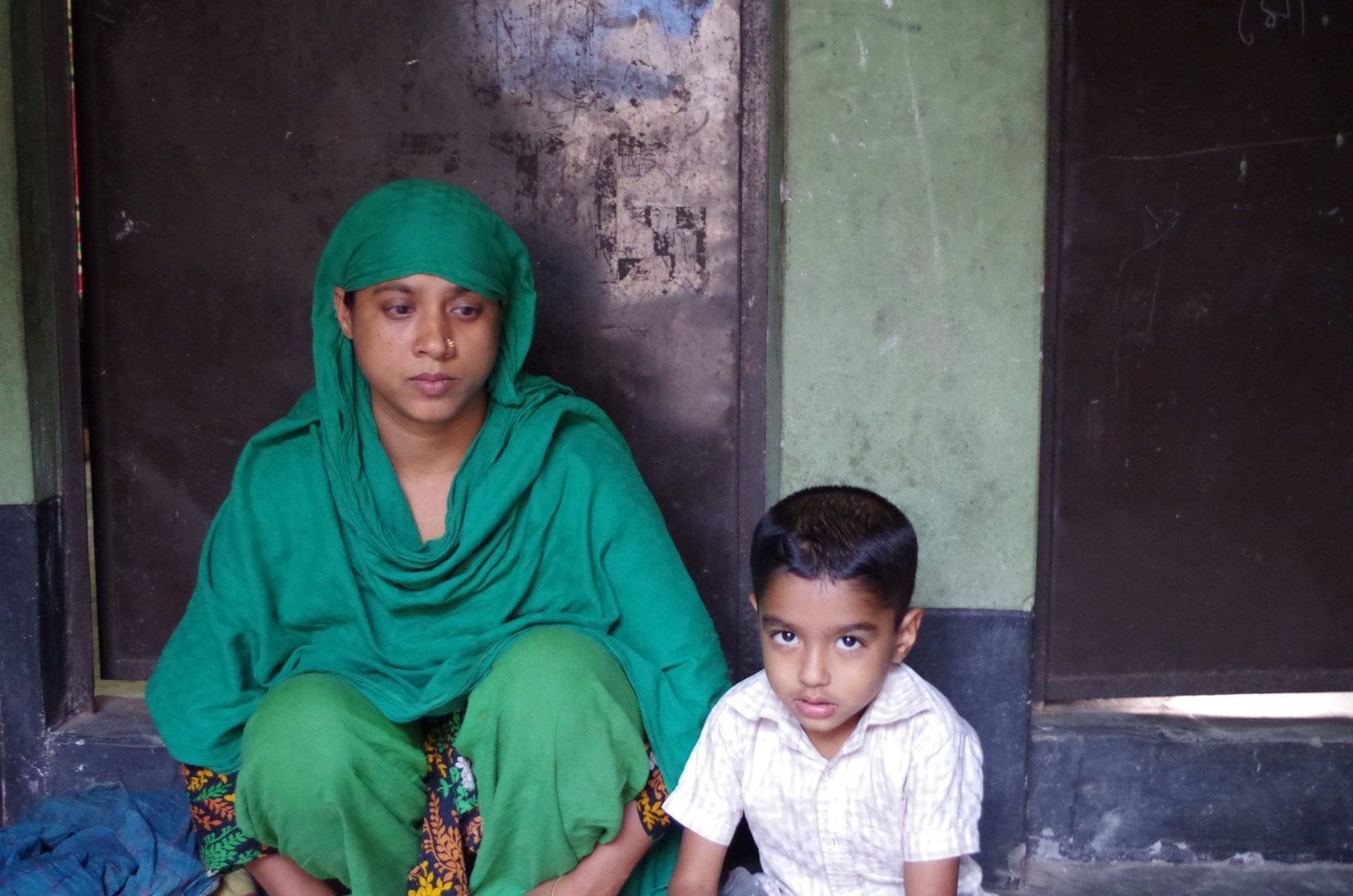
Tahera Tahera cannot remember much about her life before the day she was trapped in the Tazreen fire. She is unable to care for her four-year-old son and rarely comes out of her room. “It seems to me that something dark comes to my door and is calling me,” she says. “When I see the darkness, I become unstable and want to go far away from here,” she said.
On November 24, 2012, women and men working overtime on the Tazreen production lines were trapped when fire broke out in the first-floor warehouse. Workers scrambled toward the roof, jumped from upper floors or were trampled by their panic-stricken co-workers. Some could not run fast enough and were lost to the flames and smoke.
Hundreds of those injured at Tazreen, like Tahera (above), will never be able to work again. Survivors say they endure daily physical and emotional pain, and often are unable to support their families because they cannot work and have received little or no compensation.
Some 80 percent of export-oriented ready made garment (RMG) factories in Bangladesh need improvement in fire and electrical safety standards, despite a government finding most were safe, according to a recent International Labor Organization (ILO) report.
TAZREEN NOT UNIQUE
The Tazreen fire was not an isolated incident. Months after the Tazreen disaster, more than 1,000 garment workers were killed when the Rana Plaza building collapsed.
Approximately 2,500 people were injured—many of them losing limbs and thousands more severely traumatized.
Workers were forced to return to the building despite the warnings of structural engineers that the building was unsound.

On the five-year anniversary of the Rana Plaza collapse, women garment workers rally in Savar, Bangladesh with the relatives of those who died or were grievously injured. Credit: Solidarity Center/Musfiq Tajwar
FACTORIES CAN BE MADE SAFE
From November, 2012 to March, 2018, Bangladesh’s garment sector has suffered 3,875 injuries and 1,303 deaths due to fires, building collapses and other tragedies, according to data collected by the Solidarity Center.
The Tazreen fire and Rana Plaza collapse were preventable. Workers at Tazreen and Rana Plaza did not have a union or other organization to represent them and help them fight for a safe workplace.
Without a union, garment workers often are harassed or fired when they ask their employer to fix workplace safety and health conditions.
They are not trained in basic fire safety measures and often their factories, like Tazreen, have locked emergency doors and stairwells packed with flammable material.
Unions have helped to improve these conditions.

A young woman protests garment worker deaths in Bangladesh. Credit: Solidarity Center/Sifat Sharmin Amita
WORKERS DEMAND CHANGE
Garment workers throughout Bangladesh have staged rallies to demand that multinational corporations respect their human rights.

Women rally for their rights with labor rights organization and Solidarity Center partner Awaj Foundation near the Dhaka Press Club on May 1, 2018. Credit: Solidarity Center/Musfiq Tajwar
They have joined together to form workplace unions and bargain for safe working conditions, better wages and respect on the job.
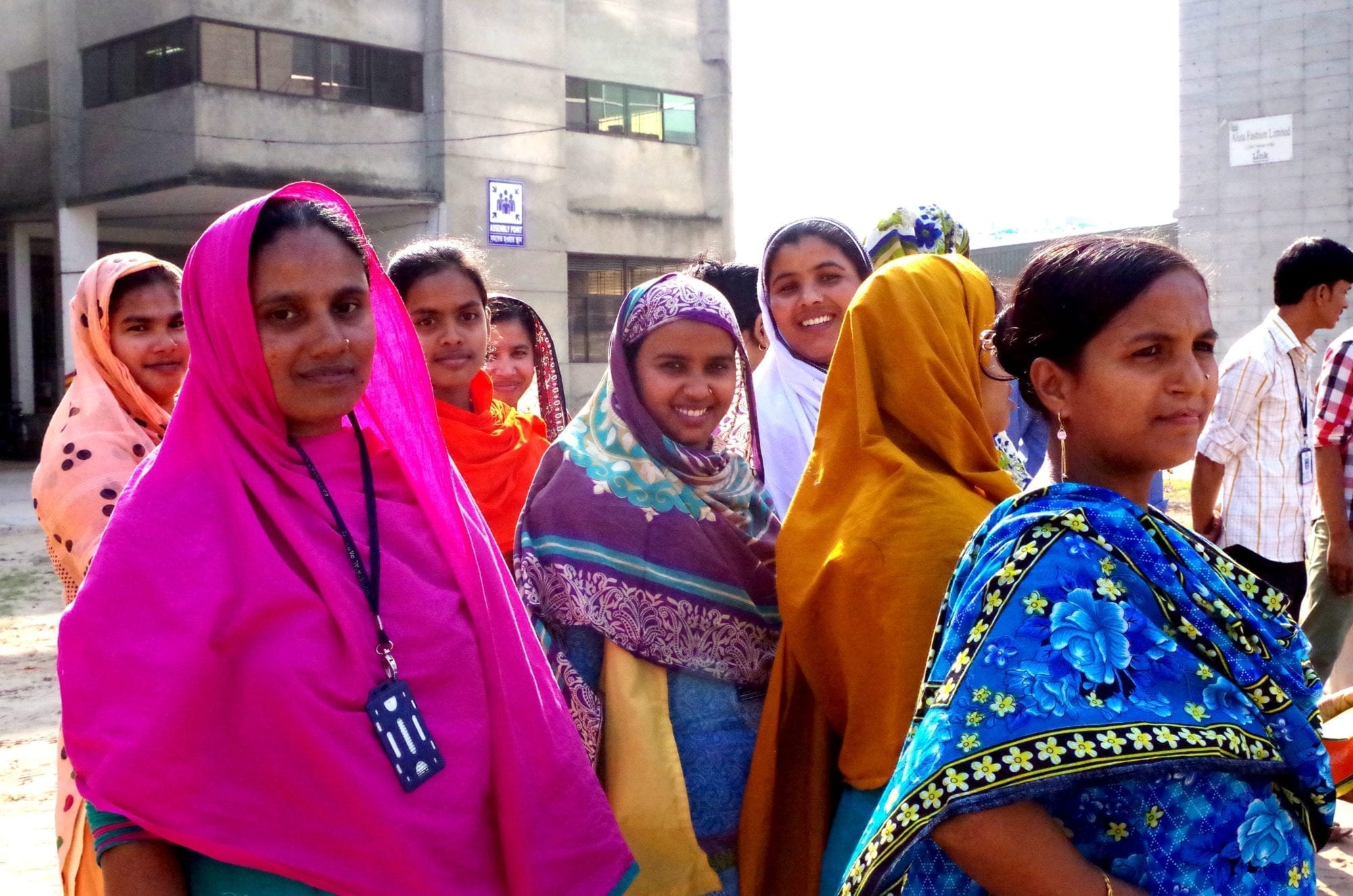
Credit: Solidarity Center
WORKERS STAND TOGETHER
When workers stand together, they can make their voices heard without fear.

The Solidarity Center partners with numerous unions and worker associations in Bangladesh. Credit: Solidarity Center
UNIONS SAVING LIVES
Worker voices have yielded real results.
Over the past few years, the Solidarity Center has held fire safety trainings for hundreds of garment factory workers.
Workers learn fire prevention measures, find out about safety equipment their factories should make available and get hands-on experience in extinguishing fires.
The Solidarity Center has also trained more than 6,000 union leaders and workers in fire safety, helping to empower factory-floor-level workers to monitor for hazardous
working conditions and demand safety violations be corrected.

Union leaders participate in the Solidarity Center’s 10-week fire safety certification course. Credit: Solidarity Center
Salma (below), a garment worker, and her co-workers faced stiff employer resistance when they sought to form a union.
With assistance from the Solidarity Center and the Bangladesh Garment and Industrial Workers Federation (BGIWF), to which their factory union is affiliated, workers negotiated a wage increase, maternity benefits and safe drinking water.
The factory now is clean, has adequate fire extinguishers on every floor, and a fire door has replaced a collapsible gate.
More than five years later, 445 factories with over 216,000 workers have unions to represent their interests and protect their rights.

Salma, a garment factory union leader in Bangladesh, says with a union, the factory is safer and workers have better wages. Credit: Solidarity Center
“CHANGES ARE POSSIBLE IF YOU HAVE UNION AND YOU CAN MAKE IT WORK.” – SALMA

Garment workers learn fire safety and other measures to improve their working conditions. Credit: Solidarity Center
INVISIBLE NO LONGER
When women workers form unions, they improve their working conditions. Through Solidarity Center workshops and leadership training, more women are running for union office.
Women now make up more than 61 percent of union leadership in newly formed factory level-unions.
As workers strengthen their collective voice in their workplaces and beyond, their hard work, their lives and their humanity become visible once more.

Bipasha, Quality Inspector (bottom left). Rina, Operator (bottom right) . Ratan, Tailor (top right). Credit: Solidarity Center
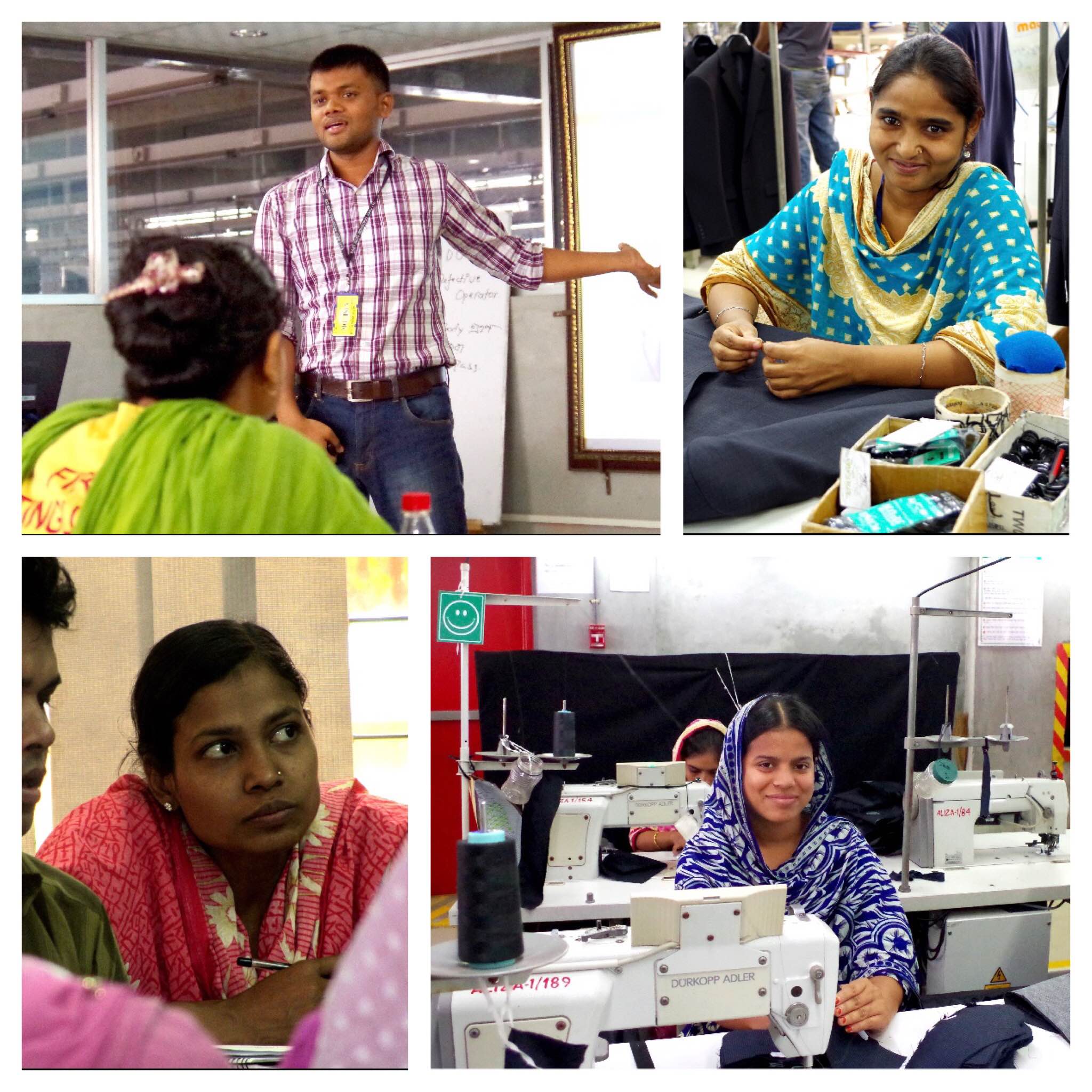
Mahfuza, Assistant Operator (top right). Sharifa, General Operator (bottom right). Credit: Solidarity Center
To learn more about garment workers in global supply chains and how the Solidarity Center supports them, visit solidaritycenter.org.
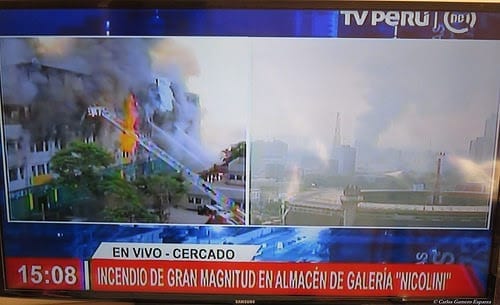
Jun 30, 2017
A deadly fire in a Peruvian warehouse has exposed forced and child labor and exploitive working conditions in the country’s vast informal economy. Four workers, one just 15 years old, who were locked into storage containers that doubled as work spaces are missing and presumed dead.
The blaze also injured at least 15 people, according to news reports. It took more than 500 firefighters five days to extinguish the flames.
On Thursday, June 22, the fire broke out in Nicolini Gallery, a building used for retail and manufacturing, located in the Las Malvinas area of Lima, Peru’s capital. Crammed with formal and informal businesses, the building included a fifth “floor” where metal shipping containers, ostensibly for storage, were used by JPEG SAC company as a workshop to produce counterfeit light bulbs. JPEG SAC employees included workers under 16 years old, who were not registered with the labor authorities.
The General Confederation of Peruvian Workers (CGTP) said that workers were killed ”not by mistake, happenstance, destiny or bad luck,” but rather they were victims of an “exploitive model that privileges profit by any means possible.”
Government officials called working conditions inhumane and slavelike.
“One of the victims called his mother to ask her to take care of his 21-day-old baby, knowing he would not make it out alive,” said Samantha Tate, Solidarity Center Peru country program director. “While it is not clear what started the fire, the building’s safety risks had been reported and it had been ordered closed. And it’s clear that these deaths were entirely preventable.”
The day before, more than 400 labor inspectors and assistant labor inspectors went out on a national strike to call for the strengthening of the National Superintendence of Labor Inspections, known as SUNAFIL. Among their strike demands, the labor inspectors called for an increase in the budget for the Labor Inspectorate to ensure proper protection of labor rights in the 14 regions where it currently operates and to open inspectorates in the 15 regions where there currently are none. Additionally, inspectors call for their employer to respect their collective bargaining agreement, and judicial decisions that would provide a bonus for inspections. The Solidarity Center works with SUNAFIL and the two labor inspectors’ unions to train workers about how labor inspections can help achieve stronger enforcement of worker rights.
The Ministry of Labor and Employment Promotion and SUNAFIL have come under scrutiny for their decision to halt a program to inspect small informal enterprises, like those found in Nicolini. On June 27, Minister of Labor Alfonso Grados testified before the congressional labor committee about the government’s role and responsibility in preventing tragedies like this one. The International Labor Organization’s office for the Andean region decried the use of forced labor in Peru, calling for all parties to abandon their indifference and join the fight to end all unacceptable forms of work in Peru and around the world.
“The labor inspectors and the young men and women working at JPEG SAC, while worlds apart in terms of education and life opportunities, are connected in the web of common humanity. When one group improves their conditions, they will be able to help the other group come out of darkness, out of danger and into the light,” said Tate. “Once we begin to recognize and act upon our connectedness, and make policies and budget decisions oriented by this respect for human life, then, and only then, will we know that there will be no more Nicolini tragedies.”
More than 200,000 workers toil in slavery-like conditions similar to the victims of the Nicolini fire, without labor rights or the information that would help them defend their rights. Seventy percent of Peruvian workers labor in the informal sector, most without contracts, social benefits, family-supporting wages or health and safety training and protection.
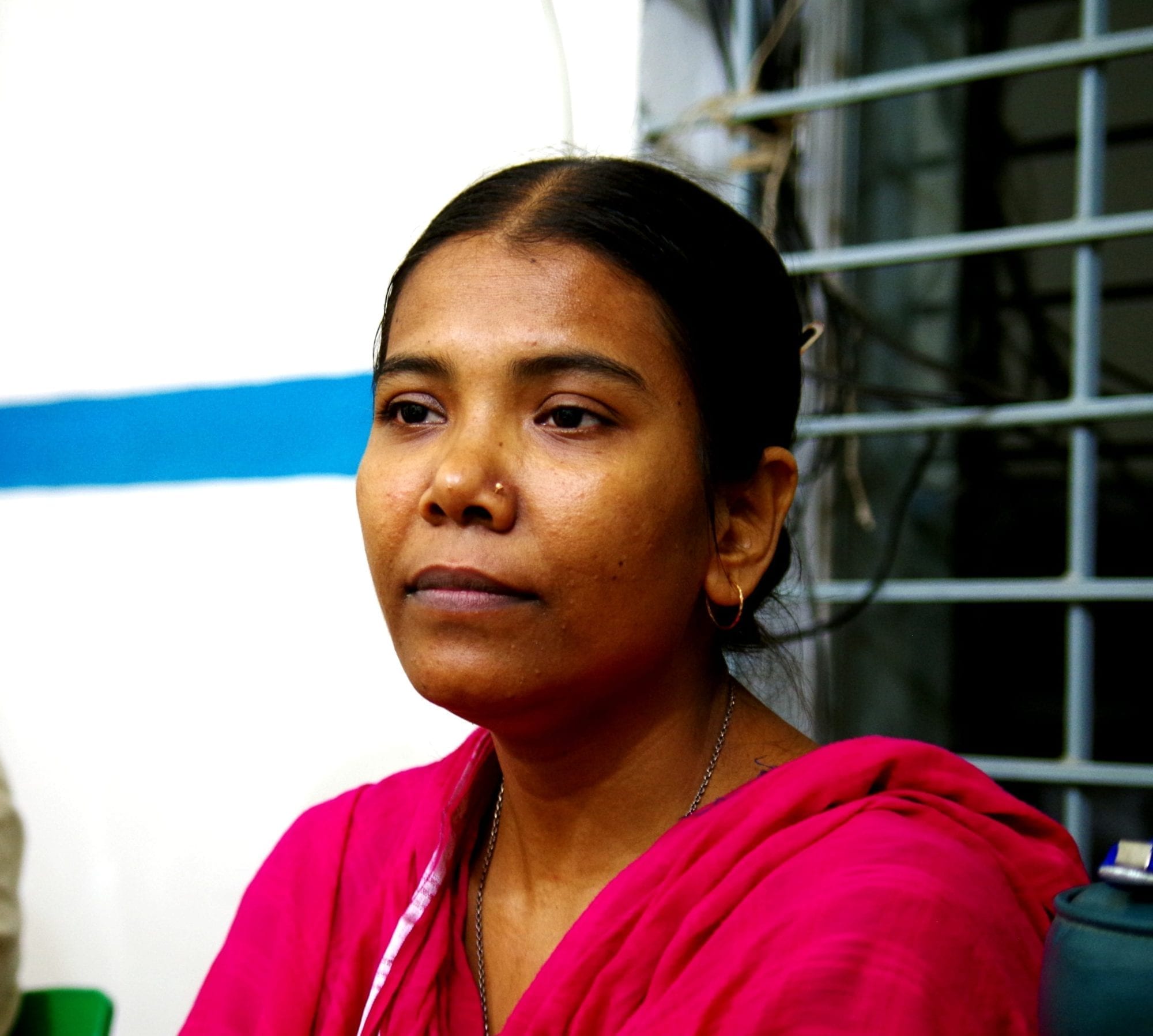
Apr 20, 2016
In Dhaka, Bangladesh, the conditions Sharina describes at the garment factory where she works can be summed up in three words: dangerous, unsanitary and exploitative. Wages are delayed. Legally required maternity leave is denied. Workers are sometimes forced to toil until 3 a.m. and are fired if they refuse. Bathroom facilities are so appalling workers have difficulty focusing on work because of the odor.
Sharina (not her real name) says her co-workers do not speak out about these issues, nor do they point out potentially hazardous electrical problems to their employer because they fear they will be fired. And each day, workers put their health and safety on the line because they have received no safety training and no safety protections.
In fact, says Sharina, 30, only when safety inspectors show up do managers distribute safety equipment like rubber boots, gloves and masks to workers, and put needle safety guards on sewing machines.
“Things would be better if we had a union,” says Sharina, 30. Workers could negotiate with management to receive safety training and avoid deadly tragedies, she says, adding that the more than 1,130 garment who died and the thousands who were injured in the Rana Plaza building collapse on April 24, 2013, would not have had to risk their lives for their jobs if they had been able to join together in a union and collectively push for safe working conditions. With a union, workers have the protection they need against being fired when standing up for improvements at work.
Solidarity Center staff interviewed Sharina, who has worked at the factory since 2012, on the eve of the third anniversary of the Rana Plaza disaster. The tragedy closely followed the November 2012 fire at the Tazreen Fashions factory that killed more than 112 Bangladesh garment workers and injured hundreds more.
Following the two disasters, the United States in June 2013 suspended its Generalized System of Preferences (GSP) agreement with Bangladesh based upon chronic and severe labor rights violations. Soon after, the Bangladesh government accepted union registrations with increasing frequency as workers organized and formed unions to address safety problems and low wages. (When workers forms unions, the Bangladesh government requires workers to register their unions before they are officially recognized.)
But after reaching a peak in January 2015, government approval of union registrations has dropped precipitously: In 2015, the government rejected 73 percent of union registration applications, according to data compiled by Solidarity Center staff in Dhaka. Rejections of workers’ desire to organize continues in 2016.
International outrage over the Rana Plaza and Tazreen disasters also prompted creation of the Bangladesh Fire and Building Safety Accord process, a legally binding agreement in which nearly 200 corporate clothing brands pay for garment factory inspections. Dozens of garment factories have been closed for safety violations and pressing safety issues addressed.
Since the Tazreen fire, 34 garment workers have been killed in fire incidents and 1,023 workers injured, according to data compiled by the Solidarity Center staff in Bangladesh.
Over the past few years, the Solidarity Center has held fire safety trainings for hundreds of garment factory workers. Workers learn fire prevention measures, find out about safety equipment their factories should make available and get hands-on experience in extinguishing fires.


 Outraged that the new minimum wage did not reflect the amount needed to get by, garment workers protested in December 2018 and January 2019. More than 11,000 union leaders and garment workers were fired following the demonstrations, and blacklists bearing workers’ names and faces hung outside factory gates. Dozens of workers were arrested, and some remained in jail on trumped-up charges for more than a month.
Outraged that the new minimum wage did not reflect the amount needed to get by, garment workers protested in December 2018 and January 2019. More than 11,000 union leaders and garment workers were fired following the demonstrations, and blacklists bearing workers’ names and faces hung outside factory gates. Dozens of workers were arrested, and some remained in jail on trumped-up charges for more than a month.
















